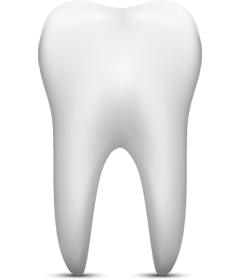 ABOUT YOUR TOOTH
ABOUT YOUR TOOTH
Your tooth consists of two main parts: the crown, which is that part of the tooth above the gum and visible in your mouth; and the root or roots, which is that part of the tooth that lies beneath the gum and is surrounded by bone. Inside each root is a channel that runs the length of the tooth. This channel is the root canal and contains the pulp (nerves, blood vessels, and soft tissue), which is often referred to as the “nerve” of the tooth. The pulp may be irreversibly damaged by bacteria associated with decay, very deep restorations, fractures, trauma, or periodontal disease.
PRESERVE YOUR NATURAL TOOTH
In order to preserve a tooth in which this has occurred, it is necessary to remove the diseased pulp tissue and disinfect the canal space and seal it. This procedure is known as endodontic therapy. Since endodontic therapy is concerned with removing only the diseased pulp from the root canal and disinfecting the canals, the root will continue to function normally because the supporting tissues remain intact. It is advisable to remove the injured pulp and bacteria and to seal the canals because the tissues surrounding the tooth may otherwise become infected.
When the pulp becomes diseased, its blood vessels become damaged and blood circulation inside the tooth will stop. This prevents the body’s immune cells from reaching the bacteria inside the tooth to destroy them. Antibiotics also cannot reach the bacteria inside the tooth since they are carried throughout our body in the blood stream. The only remaining ways of eliminating the diseased pulp and the bacteria is by performing an endodontic procedure or by extracting (pulling) the tooth.
Endodontic therapy allows you to preserve your natural tooth’s function, appearance and health.
